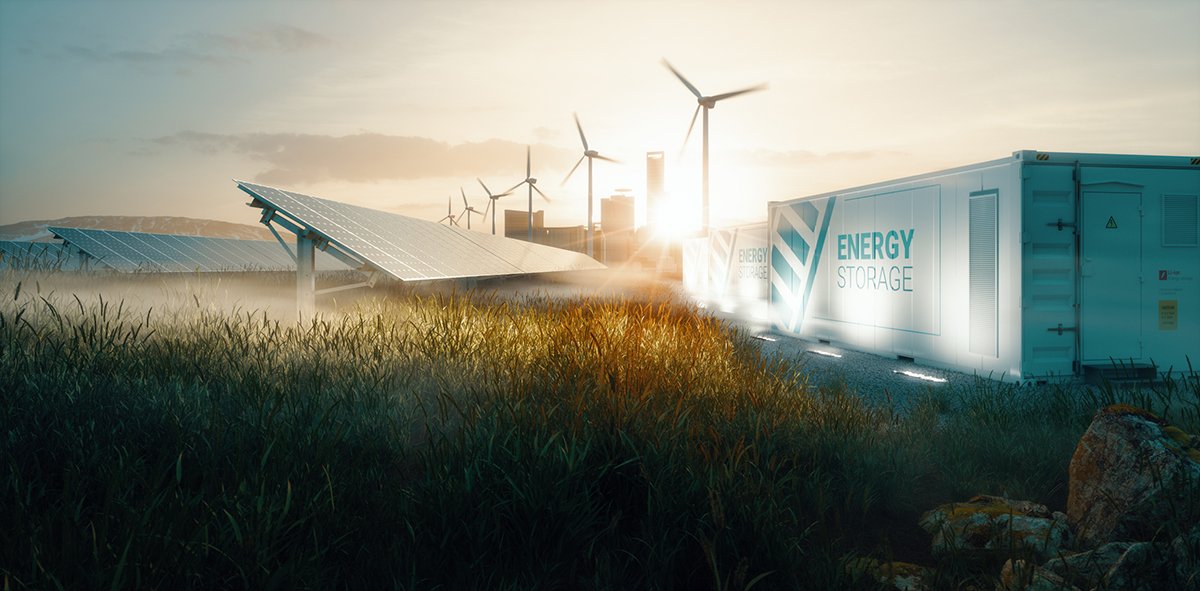CEEPR Working Paper 2021-001, January 2021
Cristian Junge, Dharik Mallapragada, and Richard Schmalensee

Variable renewable energy (VRE) resources, mainly wind and solar, are becoming increasingly important sources of electricity in many regions. Because the maximum output of VRE generators is variable and imperfectly predictable, however, increased penetration of VRE generation makes it more difficult for power system operators to match supply and demand at every instant. The traditional solution to this problem would be to employ more gas turbines or gas combined-cycle plants, both of which can increase and decrease output rapidly. But building more gas-fired generation is inconsistent with climate policy mandates and a desire to reduce carbon dioxide emissions.
As the costs of storage, particularly lithium-ion battery storage, have rapidly declined, storage has emerged as a potentially attractive, carbon-free alternative solution to problems posed by increased VRE penetration. Policymakers are therefore encouraging the deployment of storage. In California, for instance, the Public Utilities Commission has been requiring load-serving entities to procure storage since the promulgation of statutory requirements in 2010. Battery storage targets have also been established, inter alia, in Massachusetts, Nevada, New Jersey, New York, and Oregon, and are under consideration in other states. At the national level, the Federal Regulatory Commission has issued Order 841, which is intended to open wholesale energy markets to merchant storage providers.
In a new CEEPR Working paper titled “Energy Storage Investment and Operation in Efficient Electric Power Systems”, Cristian Junge, Dharik Mallapragada and Richard Schmalensee explore what economic theory implies about the general properties of cost-efficient electric power systems in which storage performs energy arbitrage to help balance supply and demand. They start from a Boiteux-Turvey-style investment planning model that generally assumes constant returns to scale in generation, offering a reasonable approximation for systems without significant coal or nuclear generation. There are a number of ways that storage has been added to models of this sort, but Junge et al. consider an explicitly dynamic Boiteux-Turvey-style model with perfect foresight, assuming constant returns to scale in storage as well as in generation. They proceed to simulate a deeply decarbonized “Texas-like” power system under greenfield conditions with two available storage technologies: Lithium-ion batteries and power-to-hydrogen-to-power.
Applying this analytical framework, Junge et al. are able to obtain a number of general results regarding investment in and operation of storage facilities under competition. Overall, the analysis reveals the greater complexity of efficient investment in and operation of storage facilities. In general, even under an assumption of constant returns to scale, storage technologies are described by the values of seven cost and performance parameters. Like reservoir hydroelectric facilities, optimal energy storage discharge depends on expectations about future demand and supply conditions, encapsulated in the shadow value of stored energy. Unlike reservoir hydro facilities, charging energy storage facilities (including pumped hydro facilities) is a decision, not something determined by nature, and the choice of storage capacity is generally less constrained than the choice of reservoir capacity.
Junge et al. nonetheless demonstrate that all storage technologies employed just break even at a social optimum. Since social optima and competitive equilibria coincide in their model, this break-even result provides some support for general reliance on markets to drive investments in energy storage. They also shown how optimal storage operation depends on the shadow value of stored energy, though that unobservable shadow value depends on conditions in future periods. The simulation suggests that it is not possible to establish fully general results regarding investment in and operation of multiple storage technologies; in other words, there is no simple merit-order analog even under perfect foresight.
What the authors further demonstrate is that, if it is optimal to employ multiple storage technologies, the ones with the lowest capital cost of energy storage capacity are generally best suited to providing long-term storage. But the analysis also shows by example that storage technologies optimally play multiple roles in grid operations, providing charge-discharge cycles of various durations. The simulation exercises used in the analysis show that when multiple storage technologies are employed, frequency domain analysis is useful for characterizing the relative importance of the different cycle durations that each provides, and that these relative weights depend on the mix of generation and storage technologies employed.
Concluding their research, Junge et al. see three important directions for future work. First, they point to the decision in many organized markets to cap energy prices below the true value of lost load, leading the competitive market to exhibit a “missing money” problem in which the equilibrium level of reliability provided will be too low because it will reflect the price cap rather than the true value of lost load. In such systems, subsidies to investment in storage may offer a preferable response to the missing money problem than widely used capacity mechanisms, a possibility that has yet to be proven. Second, they recommend further research on frequency domain analysis to examine how the power spectra of alternative storage technologies respond to changes in cost parameters and system conditions. And finally, they point to a need for computational models that can be used to optimize the operation of real storage systems under realistic stochastic processes of demand and VRE generation, with realistically imperfect foresight.
References
Cristian Junge, Dharik Mallapragada, and Richard Schmalensee (2021), “Energy Storage Investment and Operation in Efficient Electric Power Systems.” MIT CEEPR Working Paper 2021-001, January 2021.
Further Reading: CEEPR WP 2021-001





